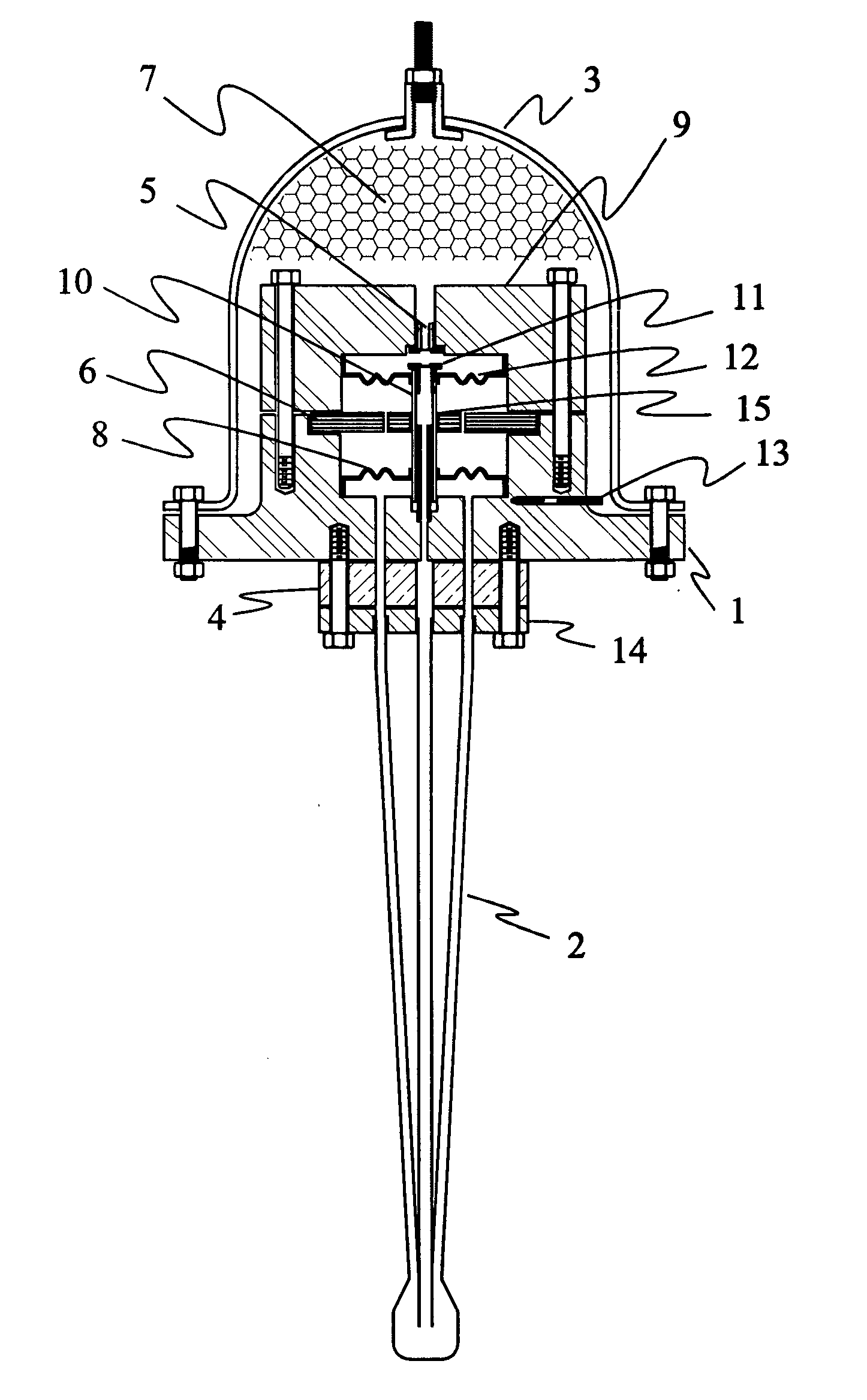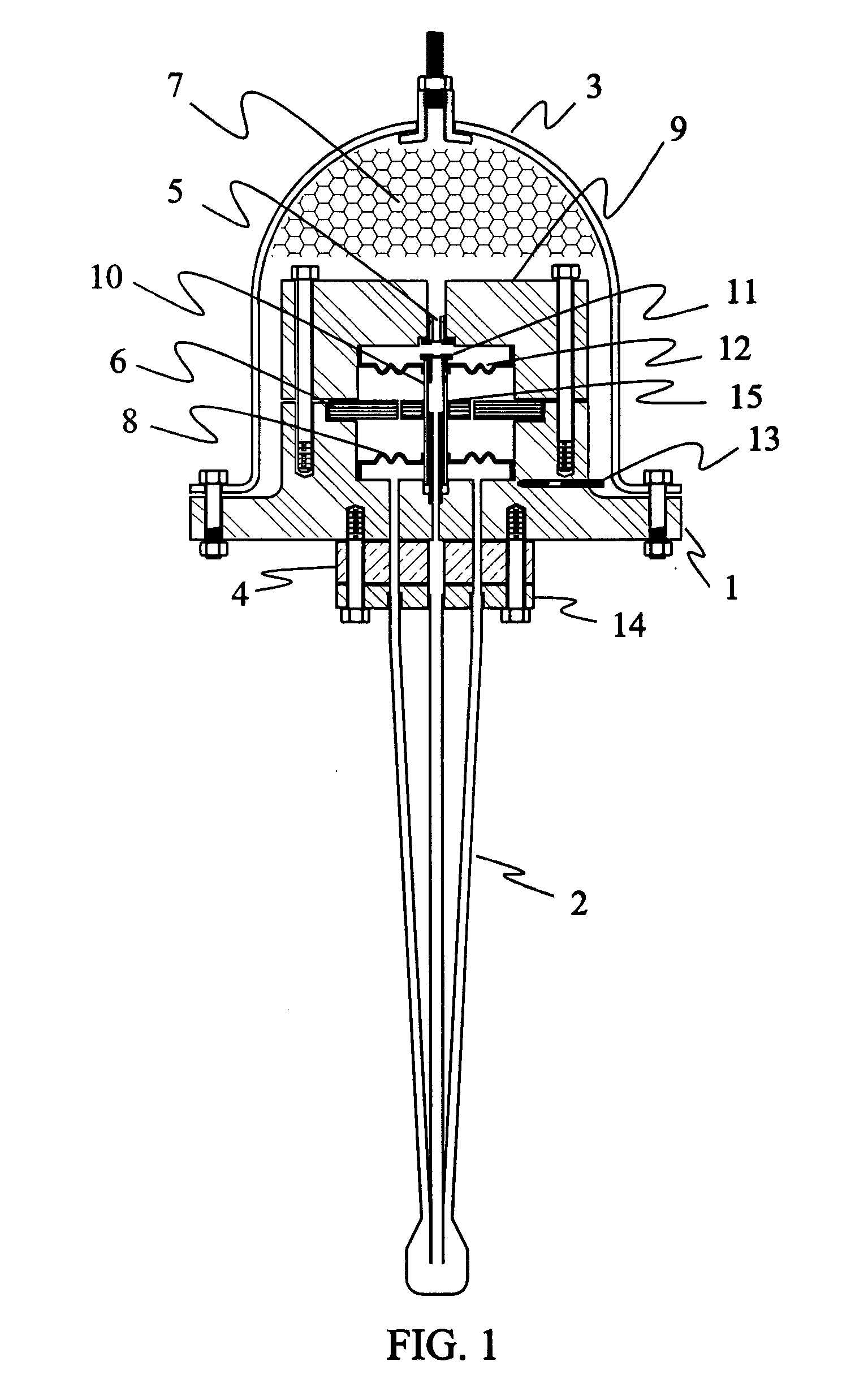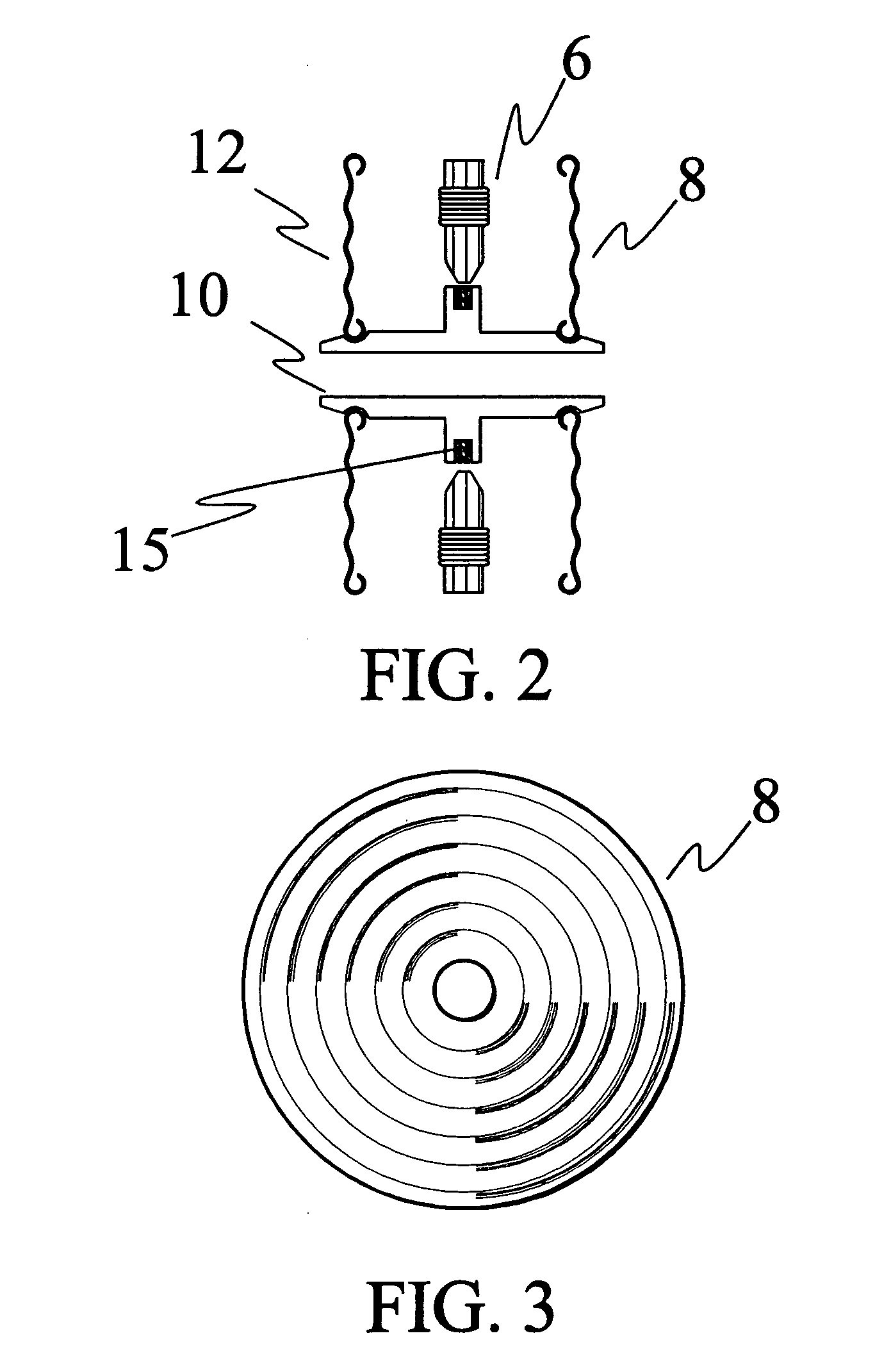Thermoacoustic engine-generator
a technology of engine generator and engine, which is applied in the direction of machines/engines, mechanical equipment, lighting and heating apparatus, etc., can solve the problems of limited power output of standing wave systems, large size and mass of output work, and low power density, and achieves shorter waveguides, less initial work, and high sonic velocity.
- Summary
- Abstract
- Description
- Claims
- Application Information
AI Technical Summary
Benefits of technology
Problems solved by technology
Method used
Image
Examples
Embodiment Construction
[0046] The TAC Engine-Generator will be described with reference to drawings that are not to scale. In the drawing figures, the reference character 2 indicates the component referred to as HX sub h in the specification, and the reference character 7 indicates the component referred to as HX sub c in the specification.
[0047] With respect to FIG. 1; the thermal break 4 is a thermal insulating means, preferably a material such as pressed fiber, ceramic or plastic, although other materials can be used, even metals that are poor conductors of heat. The purpose of the thermal break 4 is to minimize short-circuit thermal conduction between the first heat exchanger-waveguide 2, and the generator housing 1 in order to reduce conductive losses and increase thermal-to-electric conversion efficiency. Maximum efficiency depends upon maintaining the widest possible thermal gradient between the first heat exchanger-waveguide 2 and the second heat exchanger means 7. The first heat exchanger-wavegu...
PUM
 Login to View More
Login to View More Abstract
Description
Claims
Application Information
 Login to View More
Login to View More - R&D
- Intellectual Property
- Life Sciences
- Materials
- Tech Scout
- Unparalleled Data Quality
- Higher Quality Content
- 60% Fewer Hallucinations
Browse by: Latest US Patents, China's latest patents, Technical Efficacy Thesaurus, Application Domain, Technology Topic, Popular Technical Reports.
© 2025 PatSnap. All rights reserved.Legal|Privacy policy|Modern Slavery Act Transparency Statement|Sitemap|About US| Contact US: help@patsnap.com



